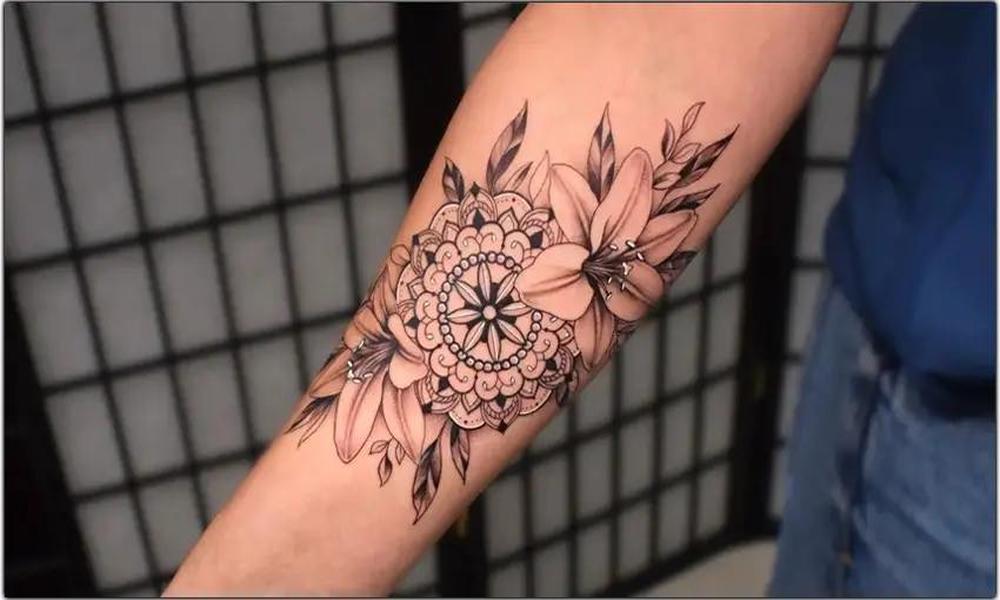Mandala tattoos have a rich and intriguing history that dates back thousands of years. The word “mandala” is derived from the ancient Indian language of Sanskrit, where “manda” means “essence” and “la” means “container.” Representing a symbolic universe within a circle, mandalas have been a significant part of various cultures and spiritual practices around the world.
Origins in Ancient Cultures:
The origins of mandalas can be traced back to ancient civilizations, including those of India, Tibet, and Nepal. In these cultures, mandalas were used as powerful tools for meditation and spiritual practices. Intricate and symmetrical patterns were drawn on the ground or depicted on walls, serving as a sacred space to focus the mind and achieve spiritual enlightenment.
In Hinduism and Buddhism:
Mandalas hold a special place in both Hinduism and Buddhism. In Hinduism, they symbolize the cosmos and are often associated with deities and cosmic energies. In Buddhism, mandalas are used as aids for meditation, representing the universe and the path to enlightenment.
Spread to the West:
During the late 20th century, the fascination with Eastern spirituality and culture spread to the West, and with it came the popularity of mandalas. Many individuals in Western countries began incorporating mandalas into various art forms, including tattoos. The appeal of mandala tattoos lies not only in their aesthetic beauty but also in their spiritual and meditative qualities.
Meanings and Symbolism:
Mandalas hold profound symbolic meanings. The circular shape symbolizes wholeness, unity, and eternity, while the center represents the inner self or a higher power. The intricate patterns and geometric shapes within mandalas convey harmony, balance, and interconnectedness. Mandalas can also represent personal growth, transformation, and the journey towards self-discovery.
Modern Interpretations:
Today, mandala tattoos continue to evolve with a blend of traditional and contemporary styles. Tattoo artists experiment with various designs, combining mandalas with elements such as animals, flowers, and sacred symbols to create unique and personalized tattoos. Some opt for vibrant and intricate mandala designs, while others embrace a more minimalist and geometric approach.
Tattooing Techniques:
Creating a mandala tattoo requires a skilled and experienced artist due to its precision and intricate details. Tattooists use fine lines and a steady hand to achieve the desired symmetry and balance, making it a challenging yet rewarding endeavor.
This post was written by J Michael Taylor. J Michael Taylor is an artist and owner of Black Amethyst Tattoo Gallery. Looking for Tattoo shops in St Petersburg Florida? Black Amethyst has you covered! They provide an art-first approach to custom tattooing in a gallery setting.


 Simple Tips To Choose A Moving Company
Simple Tips To Choose A Moving Company  Fit Matters: How to Find Perfect-Fitting Men’s Apparel
Fit Matters: How to Find Perfect-Fitting Men’s Apparel  Smile Restoration Begins With Customized Plans Tailored To Fit Every Unique Patient Need
Smile Restoration Begins With Customized Plans Tailored To Fit Every Unique Patient Need  Planning the Perfect Night Out Using Customized Party Bus Solutions For Any Occasion
Planning the Perfect Night Out Using Customized Party Bus Solutions For Any Occasion  Are online slot players becoming more sophisticated?
Are online slot players becoming more sophisticated?  Will a Rat Trap Work on Mice?
Will a Rat Trap Work on Mice?  What’s the Fastest Way to Get Rid of Scorpions from Homes in Seattle?
What’s the Fastest Way to Get Rid of Scorpions from Homes in Seattle?  Toyota RAV4 Hybrid Models Offer Excellent Fuel Savings Over Conventional Engines
Toyota RAV4 Hybrid Models Offer Excellent Fuel Savings Over Conventional Engines  Exploring DekingLED: Insights into LED Strip Lights Manufacturing and Module Supply
Exploring DekingLED: Insights into LED Strip Lights Manufacturing and Module Supply 